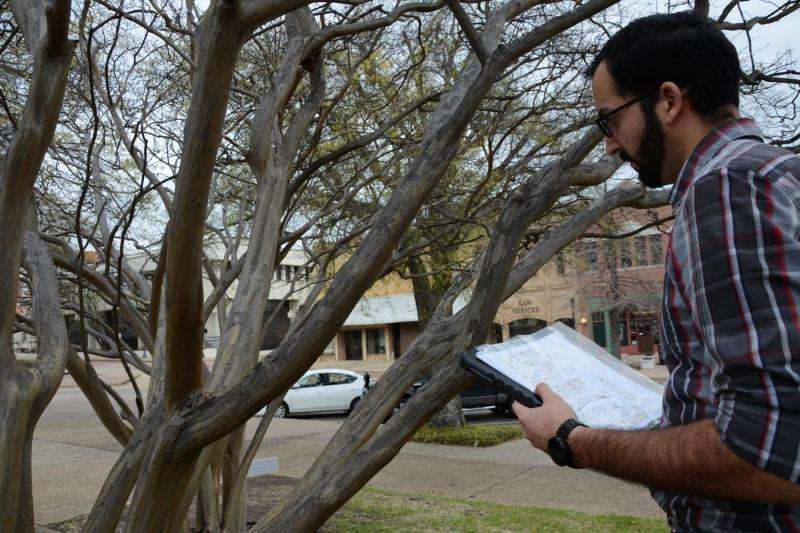Crape myrtle bark scale study reveals tree treatments to fight pest

The second year of survey data tracking crape myrtle bark scale has provided researchers information they believe will help mitigate the pest's effect on trees, said a Texas A&M AgriLife Extension Service expert.
Erfan Vafaie, a AgriLife Extension entomologist and integrated pest management program specialist in Overton, and other collaborators in College Station, Huntsville and Dallas, have monitored pest numbers the past two years to help determine crape myrtle bark scale's seasonal life cycle and peak crawler activity. The data collected has helped researchers develop strategies against them.
The crape myrtle bark scale, an invasive insect species from Asia, secrete a sugary solution, known as honeydew, that subsequently results in black mold along the branches and tree trunk, Vafaie said. The crape myrtle bark scale has not shown to be fatal for plants.
But the bark scale do affect the aesthetics for the very popular ornamental tree, especially in the Southern U.S., Vafaie said. Observations suggest the crape myrtle bark scale could be responsible for stunted growth in plants as well as reduced flowering.
Two years of data collected by Vafaie and his collaborators show bark scale crawler, or nymph, numbers peak between mid-April and the beginning of May. He suggests two treatment options – contact spray or systemic – for landscapers or residents who have identified signs of crape myrtle bark scale based on data.
Trees can be treated with a contact insecticide spray as pest numbers peak, followed by another treatment two weeks later, he said. Insecticides with the active ingredient Bifenthrin have proved to work best during the study.
"Separate treatments in two-week intervals are good because you want to target bark scale in their immature stage," he said. "You hit them during the peak and then two weeks later to catch those that have emerged following the first treatment."
Vafaie said systemic treatments should be applied much earlier to allow the trees to uptake the insecticide for effectiveness. The best time to apply systemic pesticides is mid-March to the end of March, after leaves begin to bud out and trees are actively taking up nutrients from the ground.
"You want to have a systemic like imidacloprid or dinotefuran that will be taken up into the plant so that by mid-April to the beginning of May it will be present higher in the tree when the bark scale are feeding," he said. "That way it will target them and kill them."
Vafaie said the data collection has netted positive results so far and more research on crape myrtle bark scale is expected to follow in order to give ornamental growers, wholesalers and the public improved strategies against them.
"We're collecting data this year and will in subsequent years to try and better understand how different temperatures during those years affect bark scale numbers," he said.
Provided by Texas A&M University




















